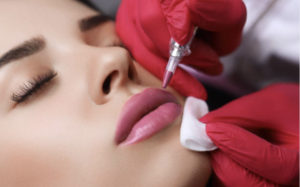What’s dermaplaning?
Dermaplaning is a skin treatment that uses an exfoliating blade to skim dead skin cells and vellus hair from your face. It’s also called microplaning or blading.
Dermaplaning aims to make your skin’s surface smooth, youthful, and radiant. This treatment claims to remove deep scarring from acne and uneven pockmarks on your skin. It’s also used to remove “peach fuzz,” the short, soft hairs on your face.
Dermaplaning can be used for any skin type and anyone with:
Acne scars
Dull skin
Dry skin
Sun-damaged skin
Fine wrinkles
There’s little to no downtime required after a dermaplaning treatment. You won’t need to take time off from work, and you may even be able to fit it in during your lunch break.
How it works
The basic concept of dermaplaning is the use of a sterile medical blade at a 45-degree angle and dragging it slowly across your skin, you remove dead cells, scar tissue, and other debris that may be making your skin’s surface look uneven.
Your skin is exposed daily to harsh environmental toxins, irritants, and sun damage. This can cause the top layer of your skin to appear dull, and it can make you look aged. Dermaplaning clears away those damaged skin cells so newer skin cells are what you see when you look in the mirror.
The procedure
During a dermaplaning procedure, you shouldn’t feel any pain., it’s actually quite relaxing.
I will deeply cleanse your skin and using a manual dermaplaning tool at a 45-degree angle. This will continue for about 30 minutes.
After the treatment is finished, a hyaluronic acid gel is applied to hydrate and soothe your skin and then a moisturiser with spf30+.
You have the option of choosing a Deluxe Dermaplaning which includes a tissue Hyaluronic Mask (you can take it home and reuse it the following day) and a chemical peel to enhance the benefits of the treatment.
Risks and side effects
Dermaplaning is a low-risk procedure. Side effects may include slight redness in your face in the hours after getting the treatment. Some people develop whiteheads on their skin in the day or two after dermaplaning and others feel the skin a little more oily for two o three days after the treatment.
What to expect
You may notice that your skin looks brighter immediately after you’re finished with a dermaplaning treatment, but it often takes a few days to appreciate the full results. As any redness subsides, you’ll be able to see the results more clearly in the days afterward.
If you have an active acne flare-up, you may need to reschedule your appointment to avoid irritating your skin further or tearing your skin’s surface.
You’ll also need to avoid direct sun exposure in the week prior to your appointment, as sun damage, such as a sunburn, could compromise your skin and make the treatment painful and the week after your treatment you will need to protect your skin with SPF+.


